#Narrowband
Explore tagged Tumblr posts
Text

IC 5070 - the Pelican Nebula (SHO)
One of the brightest targets in the late summer sky, and a great target for narrowband, as it's bright across all three common astronomical emission bands (sulfur, hydrogen, and oxygen)
Shot at 600mm (f/4) with a Newtonian telescope from Bortle 7 skies. Total integration time: 8 hours (2h Sii, 2h Ha, 4h Oiii)
256 notes
·
View notes
Photo
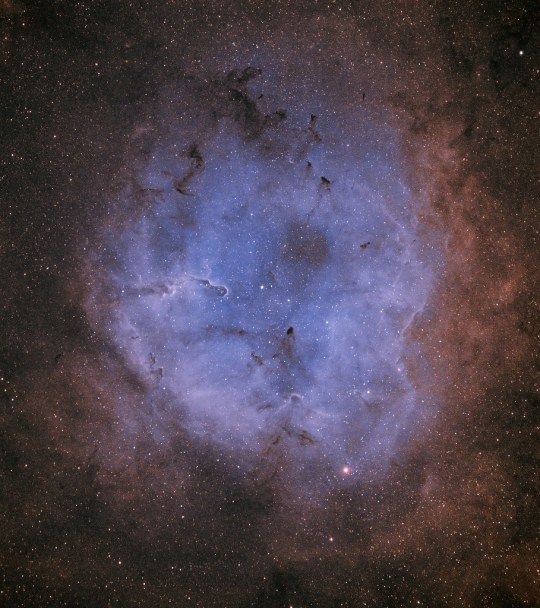
Elephants Trunk Nebula by huntapix
179 notes
·
View notes
Text

Narrowband filter tests. Oiii and Halpha.
8 notes
·
View notes
Text
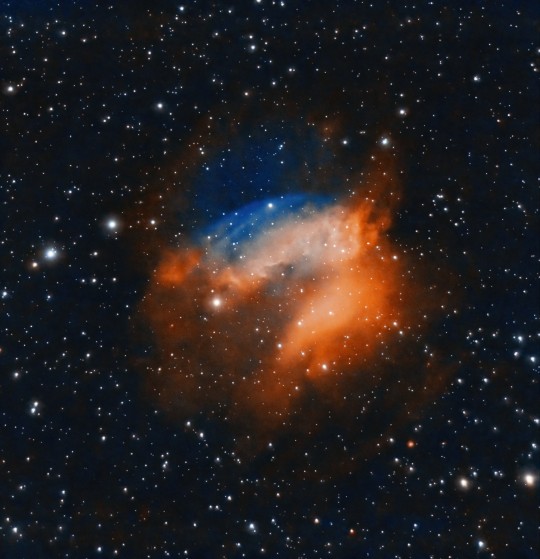
SH2-174. The Valentine Rose Nebula. 32hrs of exposure from my backyard.
Some controversy over what the nature of the nebula is. Great scientific study in the below article.
https://iopscience.iop.org/article/10.1088/0004-637X/799/2/198/meta
My acquisition details:
https://astrob.in/57cgka/0/
#sh2-174#myphotos#astrophotography#nebula#zwo#neq6 pro#celestron c8#asi1600mm cool#antlia#celestron#narrowband#backyard astrophotography
2 notes
·
View notes
Text

I spent most of the night capturing OIII (Oxygen 3) and SII (Sulfur 2) data in the IC1396 region in Cepheus, enough to combine with last week's Ha (Hydrogen-alpha) data to create a SHO color image, mapping sulfur to red, hydrogen to green, and oxygen to blue in RGB. I've balanced the RGB intensity, but left green for Ha a bit higher. Hydrogen is the most abundant element in the universe—by a very wide margin, and without balancing the Ha, OIII, SII channel values, most nebulae would be overwhelmingly green. That said, I do like to keep more hydrogen green in my images, making them a bit truer to the emission values of most deep sky objects.
36 notes
·
View notes
Text
https://ui.adsabs.harvard.edu/abs/1993ApJ…415..218H/abstract
Five Years of Project META: an All-Sky Narrow-Band Radio Search for Extraterrestrial Signals
Horowitz, Paul
Sagan, Carl
Abstract:
We have conducted a five-year search of the northern sky (delta between 30 and 60 deg) for narrow-band radio signals near the 1420 MHz line of neutral hydrogen, and its second harmonic, using an 8.4 x 10 exp 6 channel Fourier spectrometer of 0.05 Hz resolution and 400 kHz instantaneous bandwidth. The observing frequency was corrected both for motions with respect to three astronomical inertial frames, and for the effect of Earth's rotation, which provides a characteristic changing Doppler signature for narrow-band signals of extraterrestrial origin. Among the 6 x 10 exp 13 spectral channels searched, we have found 37 candidate events exceeding the average detection threshold of 1.7 x 10 exp -23 W/sq m, none of which was detected upon reobservation. The strongest of these appear to be dominated by rare processor errors. However, the strongest signals that survive culling for terrestrial interference lie in or near the Galactic plane. We describe the search and candidate events, and set limits on the prevalence of supercivilizations transmitting Doppler-precompensated beacons at H I or its second harmonic. We conclude with recommendations for future searches, based upon these findings, and a description of our next-generation search system.
Publication:
Astrophysical Journal v.415, p.218 Pub Date: September 1993 DOI: 10.1086/173157
#Extraterrestrial Intelligence;#Narrowband;#Radio Astronomy;#Sky Surveys (Astronomy);#Line Spectra;#Radio Spectra;#Space Sciences (General);#EXTRATERRESTRIAL INTELLIGENCE;#RADIO LINES: GENERAL
0 notes
Text
Narrowband IoT (NB-IoT) Chipset Market Size, Share, Industry Report & Trend Analysis
0 notes
Text
Global Narrowband IoT (NB-IoT) Market - WishTree Insight
Global Narrowband IoT (NB-IoT) Market - Market Size, Share & Industry Trends, Growth Analysis Report by Product Type, By Consumption and Forecast 2022 – 2032. Narrowband IoT (NB-IoT) is a low-power wide-area network (LPWAN) technology that is specifically designed for Internet of Things (IoT) devices and applications.
For more details visit: https://wishtreeinsight.com/reports-details/global-narrowband-iot-nb-iot-market-wishtree-insight
0 notes
Text
Keysight Launches E7515R Solution for CIoT Technologies, Including 5G RedCap
Keysight Technologies, a leading technology company, has launched a wireless test platform designed specifically for all cellular internet of things (CIoT) technologies, including the 5G RedCap specification. The E7515R solution is a network emulation platform that provides chipset, device, and module makers with streamlined capabilities for RedCap without the additional features needed to test a…
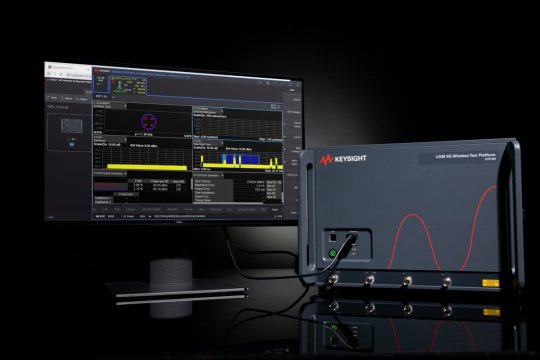
View On WordPress
#5G New Radio#5G RedCap#chipset#CIoT#device#E7515R#functional#Keysight Technologies#lab validation#LTE Cat-1bis#LTE Category M#Mobile World Congress 2023#module makers#Narrowband IoT#next generation#performance testing#protocol#return on investment#RF#wireless test platform
0 notes
Text
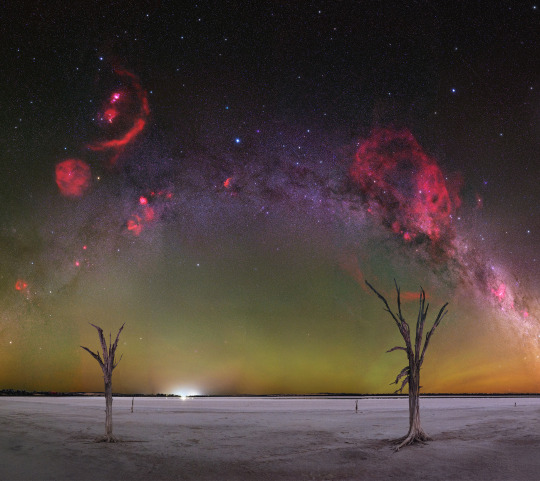

Summer Milky Way at Lake Ninan, Western Australia
Nikon d810a - 50mm - ISO 6400 - f/2.8 Foreground: 13 x 10 seconds Sky: 43 x 30 seconds iOptron SkyTracker Nantong Foric H-Alpha 20nm narrowband filter
#Milky Way#night#sky#stars#space#astrophotography#landscape astrophotography#astronomy#galaxy#nebula#h-alpha#filter#Orion#Gum#Magellanic Clouds#Carina#Lake Ninan#dead tree#trees#lake#salt#nikon#d810a#iOptron#SkyTracker
1K notes
·
View notes
Text

IC 5146 - the Cocoon Nebula (HaRGB)
An especially fun target to shoot, because it's a combination emission and reflection nebula. The red in its center is ionized hydrogen, which emits a deep red glow, but the areas around the nebula with fewer stars are filled with dust, which reflects nearby starlight to produce the pale blue glow at the nebula's apparent edges.
Shot at 1600mm with a 200mm RC telescope and a ZWO ASI533MM Pro. 2h of Ha integrated exposure time, plus 1h each of RGB data.
All images on my blog, unless noted, are shot from my backyard in Bortle 7 skies.
#astrophotography#astronomy#space#deep sky#nebula#narrowband#night sky#lensblr#galaxy#emission nebula#reflection nebula#cocoon nebula#ic 5146
57 notes
·
View notes
Photo

2024 December 13
M51: Tidal Streams and H-alpha Cliffs Image Credit & Copyright: The Deep Sky Collective - Tim Schaeffer, Carl Björk, Steeve Body, Fabian Neyer, Aki Jain, Ryan Wierckx, Paul Kent, Brian Valente, Antoine & Dalia Grelin, Nicolas Puig, Stephen Guberski, Mike Hamende, Julian Shapiro, John Dziuba, Mikhail Vasilev, Bogdan Borz, Adrien Keijzer
Explanation: An intriguing pair of interacting galaxies, M51 is the 51st entry in Charles Messier's famous catalog. Perhaps the original spiral nebula, the large galaxy with whirlpool-like spiral structure seen nearly face-on is also cataloged as NGC 5194. Its spiral arms and dust lanes sweep in front of its smaller companion galaxy, NGC 5195. Some 31 million light-years distant, within the boundaries of the well-trained constellation Canes Venatici, M51 looks faint and fuzzy to the eye in direct telescopic views. But this remarkably deep image shows off stunning details of the galaxy pair's striking colors and fainter tidal streams. The image includes extensive narrowband data to highlight a vast reddish cloud of ionized hydrogen gas recently discovered in the M51 system and known to some as the H-alpha cliffs. Foreground dust clouds in the Milky Way and distant background galaxies are captured in the wide-field view. A continuing collaboration of astro-imagers using telescopes on planet Earth assembled over 3 weeks of exposure time to create this evolving portrait of M51.
∞ Source: apod.nasa.gov/apod/ap241213.html
115 notes
·
View notes
Text

NGC 2070 Tarantula Nebula and Surrounds in Narrowband Modified SHO
#nebula and quasar#dark nebula#planetary nebula#nebula#nebulosa#astronomy#nasa#astronomers#universe#nasa photos#astrophotography#outer space#astrophysics#nasawebb#hubble space telescope#space exploration#space#science#space shuttle#space science#james webb space telescope#nasa science#science facts#planetary science#space photography#astronomy photography#i love astronomy#astronomy facts#astronomy picture of the day#planet earth
68 notes
·
View notes
Text

Blown by fast winds from a hot, massive star, this cosmic bubble is huge. SH2-308, also known as The Dolphin-head Nebula, is cataloged as Sharpless 2-308 and lies 5,000 light-years away toward the constellation Canis Major and covers a diameter of 60 light-years at its estimated distance. The massive star that created the bubble, a Wolf-Rayet star, is the bright one near the center of the nebula. Wolf-Rayet stars have over 20 times the mass of the Sun and are thought to be in a brief, pre-supernova phase of massive star evolution. Fast winds from this Wolf-Rayet star create the bubble-shaped nebula as they sweep up slower moving material from an earlier phase of evolution. The windblown nebula has an age of about 70,000 years. Relatively faint emission captured by narrowband filters in the deep image is dominated by the glow of ionized oxygen atoms mapped to a blue hue.
Image Credit & Copyright: Prabhu Kutti
#astronomy#space#science#universe#nebula#bubble#dolphin head#dolphin#head#canis major#constellation#supernova#moon#diameter#light years#far#stars#follow#like#reblog#the first star#the first starr#thefirststar#thefirststarr#nasa#apod#tumblr#blog#space blog#colourful
118 notes
·
View notes
Text
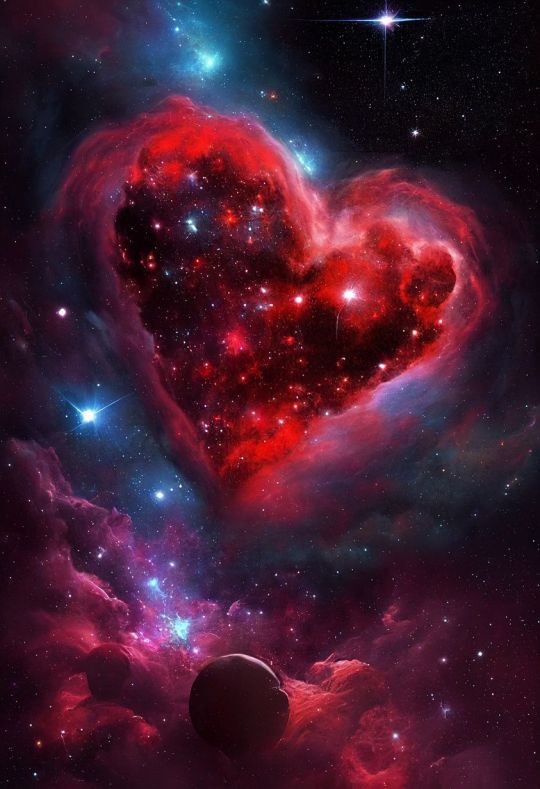
The Heart Nebula Talon AbraxasThe Heart Nebula is 7,500 light years away from Earth and is located in the Perseus Arm of the Galaxy in the constellation Cassiopeia. It was discovered by William Herschel in November 1787. The Heart Nebula is made up of ionized Oxygen and Sulfur gasses, responsible for the rich colors seen in narrowband images. The shape of the nebula is driven by stellar winds from the hot stars in its core. The nebula spans almost 2 degrees in the sky, covering an area four times that of the diameter of the full moon.
289 notes
·
View notes